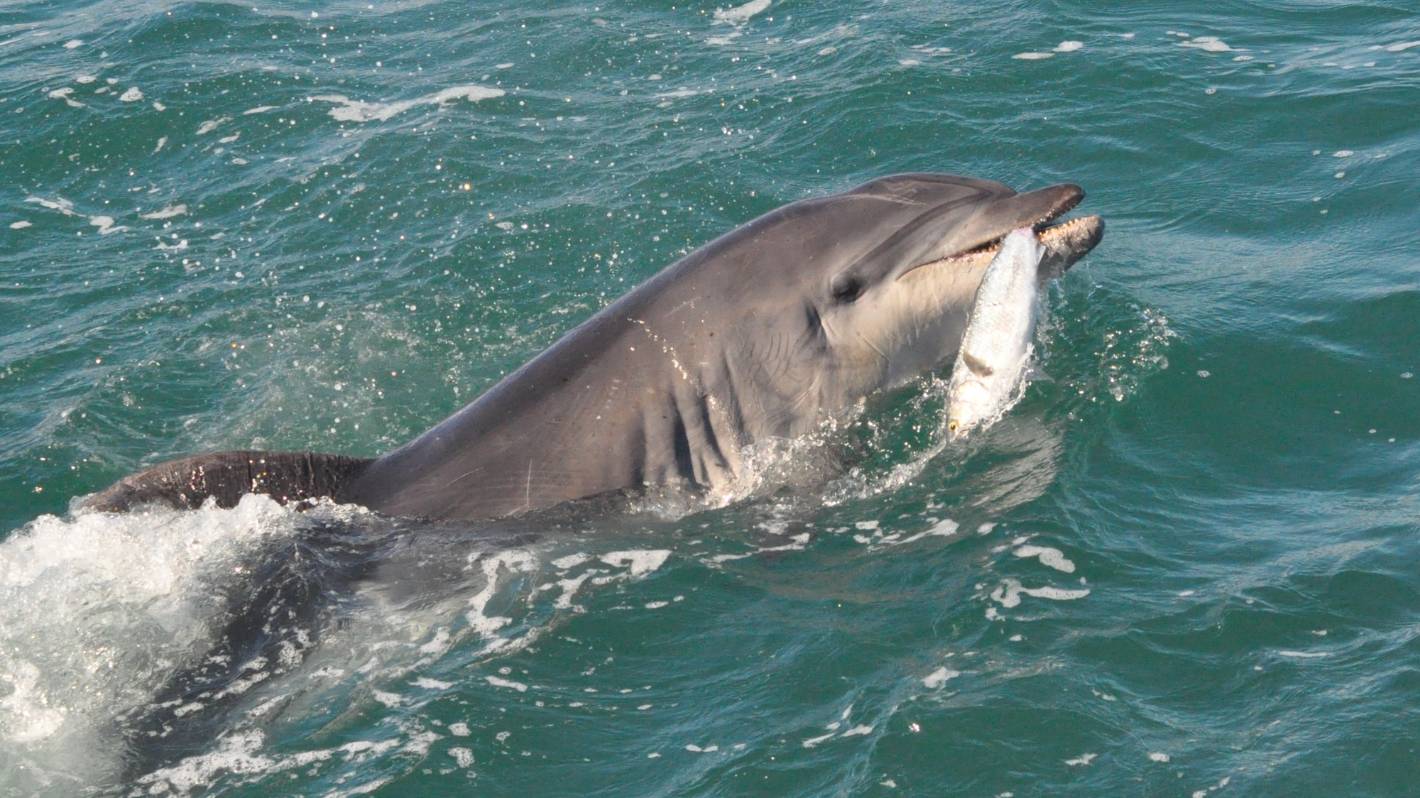- The Bay of Islands marine mammal sanctuary was introduced in December.
- Dolphins are now seen interacting normally and caring for their young.
- Commercial operators are embracing the sanctuary as a tourist attraction.
The country’s first marine mammal sanctuary is helping dolphins be dolphins in Northland’s popular Bay of Islands.
The Te Pēwhairangi (Bay of Islands) Marine Mammal Sanctuary was introduced on December 15, 2021, to help reverse a decline in bottlenose dolphins.
The rules mean no boats or swimmers can come within 300m of any marine mammal – including dolphins, whales or seals – and boats must stop if they find themselves within 300m.
Boats can only travel 5 knots or less in two marine mammal safe zones – east of Russell’s Tapeka Point and near Roberton Island/Motuarohia.
READ MORE:
* Government OKs marine mammal sanctuary in bid to save Bay of Islands dolphins
* Huge support for DOC’s marine sanctuary as Bay of Islands dolphin numbers plummet
* Bay of Islands sanctuary will not help dolphins, local boat operators say
* Covid-hit business owners fear they’ll be crippled by Bay of Islands dolphin sanctuary
The rules are already helping to change the behaviour of resident bottlenose dolphins, said Department of Conservation senior ranger biodiversity (marine), Dr Cat Peters.
Before the sanctuary was introduced, the dolphins had an almost “adrenaline junky behaviour”, spending all day interacting with the boats and riding bow wake, she said.
Supplied
Bottlenose dolphins in the Bay of Islands have been spotted acting normally, including playing and teaching their young, instead of interacting with boats. (File photo)
Dolphin numbers dropped 91% between 1999 and 2020, and 75% of calves died.
Peters said for the first time this year, she had observed dolphins being dolphins.
“They were doing a much more normal behaviour profile. They were picking up seaweed and playing with it and teaching their young.
“Everyone [in boats] who was stopped got to watch them do this behaviour, rather than them jumping in front of the boats.”
Two calves were born in the season and both have survived, Peters said.
Denise Piper/Stuff
Dr Cat Peters from the Department of Conservation says the Te Pēwhairangi (Bay of Islands) Marine Mammal Sanctuary is already producing desired results.
The dolphins were also using the 5-knot marine mammal safe zones to feed or rest, and were spotted in at least one of the two areas each day, she said.
Peters thought it might take several generations for the resident dolphins to move past their adrenaline junky behaviour, but she hoped new dolphins would move into the area.
Most people spoken to by DOC had a good understanding of the rules and said they found them easier to follow than the standard marine mammal rules – which vary depending on species and the presence of calves.
“Engaging with the people on the water was really a breath of fresh air for us. People understood, and the importance really hit home,” Peters said.
However, 352 boats got a verbal warning and educational material about the sanctuary, and 69 had official warnings where the skipper’s details were recorded.
Supplied
Paihia Dive owner Craig Johnson says the new rules are working well and could help attract tourists to the Bay of Islands. (File photo)
There are also 11 pending cases which could result in an infringement or prosecution.
Penalties include fines of $800 to $1600, while prosecutions could lead to a maximum penalty of two years in jail or a fine up to $100,000.
Commercial operators are embracing the sanctuary and are also finding the rules easy to follow.
Craig Johnston from Paihia Dive was previously concerned the rules would stop diving at Lighthouse Bay and Bird Rock, where fur seals were almost always present.
However, these two spots are just outside the sanctuary’s boundaries.
Within the sanctuary, Johnston had to stop his boat for dolphins only four or five times, and divers are happy to sit and watch marine mammals if they approach while they are underwater, he said.
Tammy Jameson from Bay of Islands Snorkelling also said she had hardly been affected by the new rules, as it was easy to avoid marine mammals and the 5-knot zones.
Johnston said for local businesses hit hard by Covid-19 lockdowns and the lack of international tourists, the sanctuary is another selling point for the Bay of Islands.
“It’s the only marine mammal sanctuary in New Zealand – hopefully it has potential to drive people here.”
The rules will be reviewed in December 2024, to ensure they are working as intended.




